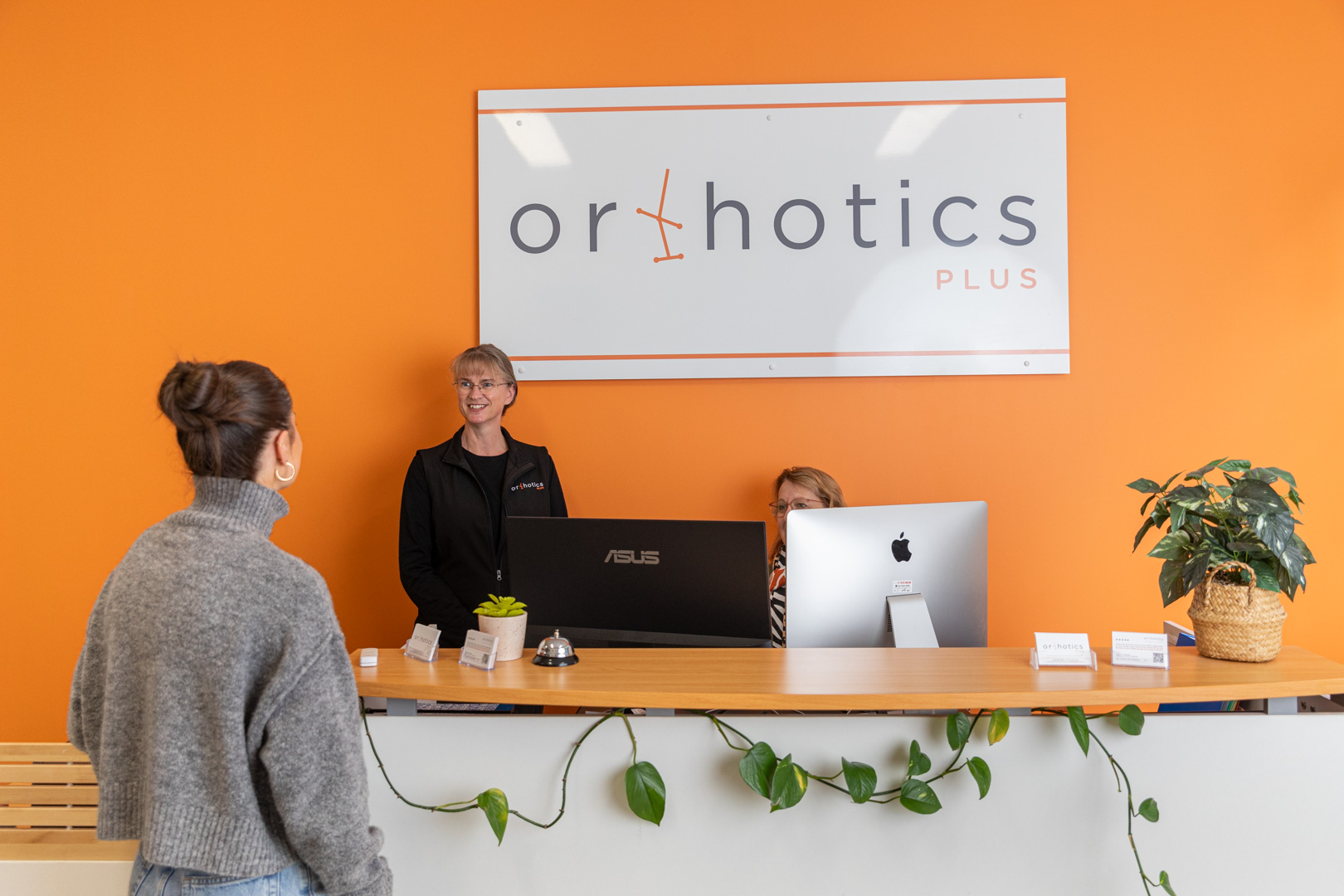Surgeries that Require a Postoperative Knee Brace
The necessity for a postoperative knee brace varies depending on the surgeon’s protocol.
As such, there is no definite answer to what surgeries always justify post-operative bracing. Nonetheless, this is a common service at Orthotics Plus.
Post-operative knee braces are commonly used after ligament reconstructions, like ACL or MCL surgeries, and sometimes after meniscal repairs or tendon repairs. We also provide them after knee replacements in some cases.
Any surgery that involves the soft tissue around the knee, or where there’s concern about a graft, plate, or repair shifting during the healing process—that’s where a post-op brace comes in.

What Does a Post Operative Brace Do?
The brace helps provide support and compression, and more importantly, it limits the knee’s range of motion to protect the surgical site and tissues while it heals.
The brace also helps reduce swelling and inflammation, which aids in the overall healing process.
The knee is very vulnerable post-surgery, so it’s about keeping things stable during that critical period.
On average, patients wear these for 6-12 weeks.
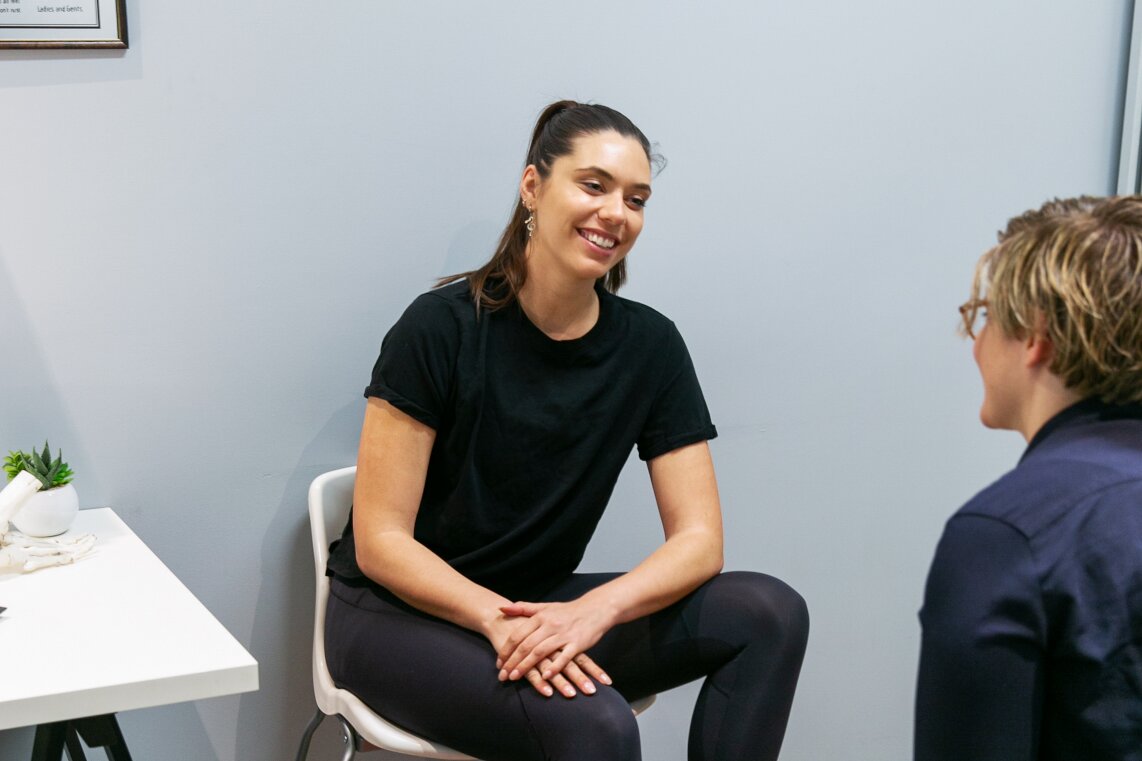
What are the Different Types of Post Operative Braces?
Post-Op Knee Braces (Hinged/Range of Motion Control)
These are the most commonly fitted post-surgery braces. They feature two rigid metal uprights on either side of the knee, with material that wraps around the knee. The key feature of these braces is a range of motion control hinge, allowing us to adjust the knee’s flexion and extension range as required by the surgery. We can lock the knee at specific angles—either straight or bent.
Range of motion control braces, which make up about 90% of the post-op knee braces we fit.
Knee Immobiliser (Zimmer Splint)
This is a basic knee extension orthosis, also known as a Zimmer splint. It’s used to completely immobilise the knee by locking it straight. These braces are simple, affordable, and consist of rigid uprights with straps that wrap around the knee. They can be used both pre and post-surgery to stabilize the knee in a fixed position.
We will sometimes use these temporarily when there is a lot of swelling at the knee and a different brace can’t be applied until this swelling comes down.
PCL Braces
While any brace can technically be used postoperatively, some braces are more specialised. For example, a rebound PCL brace can be used both for conservative management and post-op recovery after a PCL reconstruction. This brace primarily serves to relieve tension on the PCL while it heals, and also offers range of motion control features.
Unloader Braces
Another specific type of post-op knee brace is the unloader brace.
This is used for patients who have had surgery on the medial meniscus, the cartilage that acts as a shock absorber in the knee. If the surgeon wants to take pressure off the medial compartment during healing but keep the patient active, an unloader brace can be used to help support this process.
This is a less common prescription.
How Can I Be Referred to Orthotics Plus?
There are three main ways patients come to us for postoperative services.
1. Referral from Community or GP/Physio (Pre-Surgery)
Patients often come to us through the community, GP, or physiotherapist with injuries like an ACL and MCL combination.
In these cases, we fit them with a knee brace during the acute phase to help reduce pain and provide stability. Afterward, they may consult with a surgeon, who may recommend surgery and, in some cases, advise getting a range of motion (ROM) knee brace for use during the recovery period, both pre- and post-surgery.
This allows for smoother coordination between us and the patient.
2. Post-Surgery (Hospital Fitting)
In many cases, the patient undergoes surgery first, and then, while they’re in the hospital, the surgeon calls us to fit them with a ROM knee brace.
This often happens immediately after surgery, when the patient may still be under anesthesia, or later, when they’re more alert.
While it’s possible to fit them in a Melbourne hospital, it’s less ideal than fitting them preoperatively.
3. Preoperative Fitting (Ideal Scenario)
The best approach is fitting the knee brace preoperatively, as it allows us to properly educate the patient on how to use it and ensure a good fit.
Although adjustments may be needed post-surgery due to swelling or bandages, fitting it in advance is the most effective strategy.
However, this requires foresight from the surgeon, which doesn’t always happen, and the usual approach is to wait until after surgery to arrange the knee brace fitting.
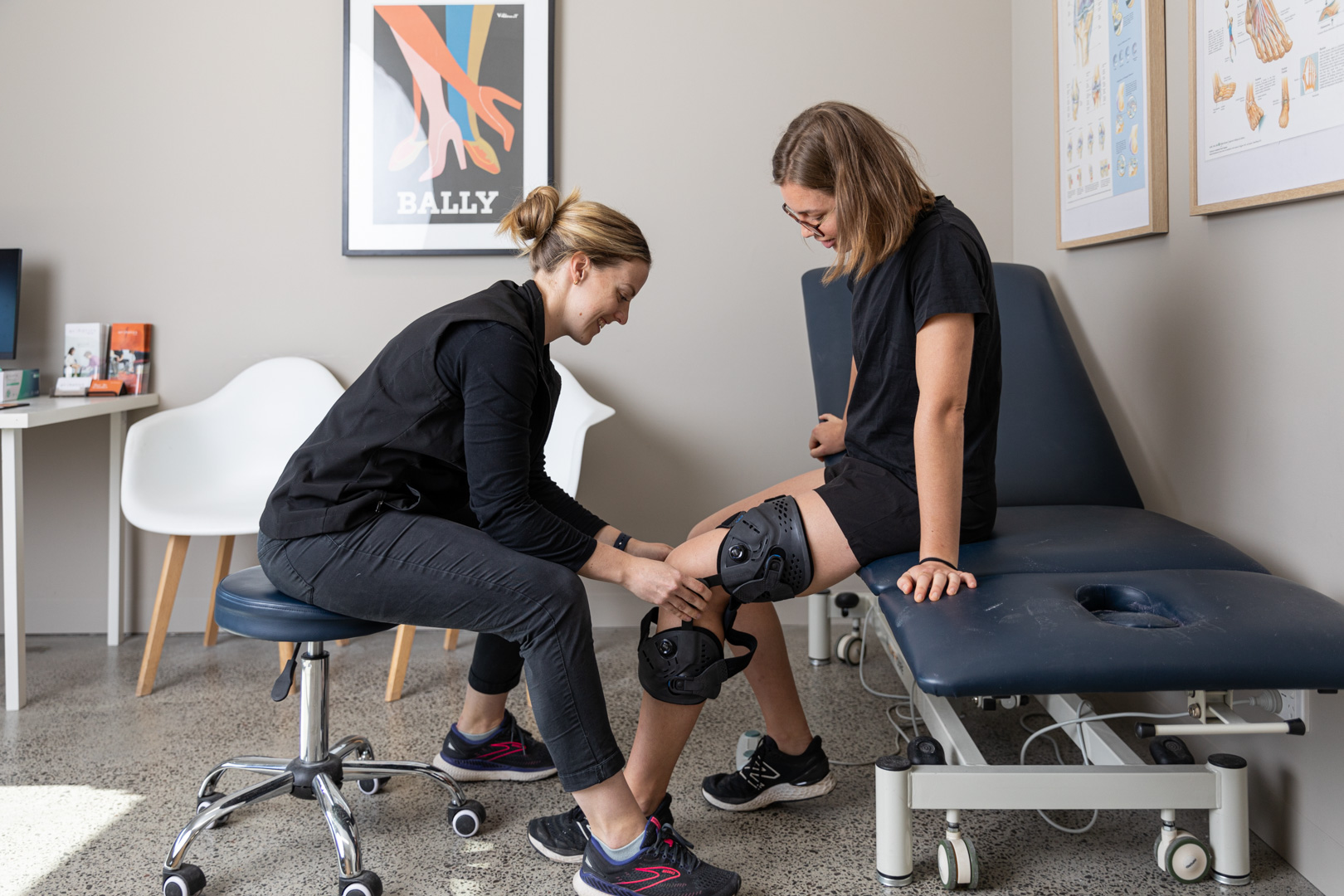
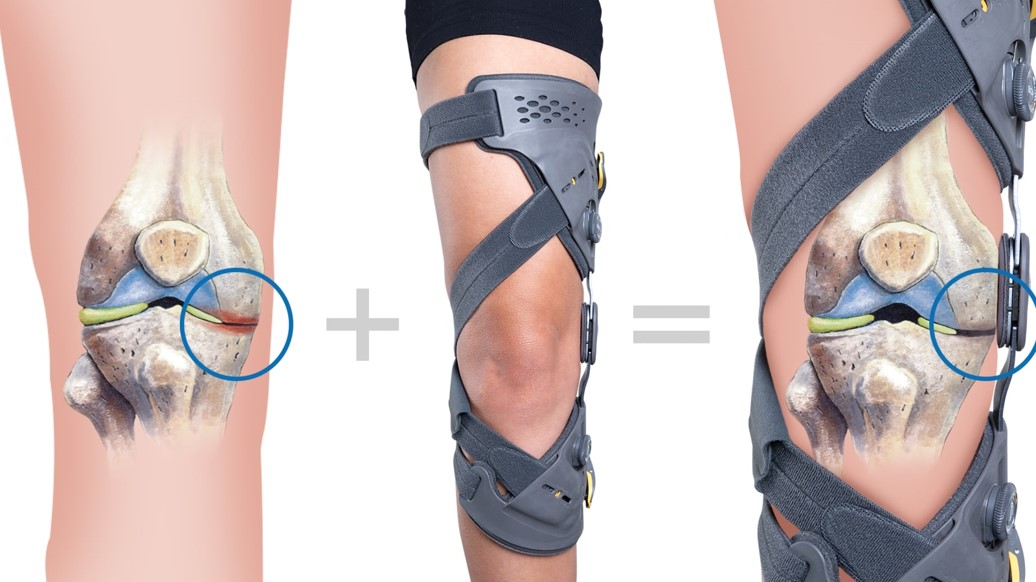
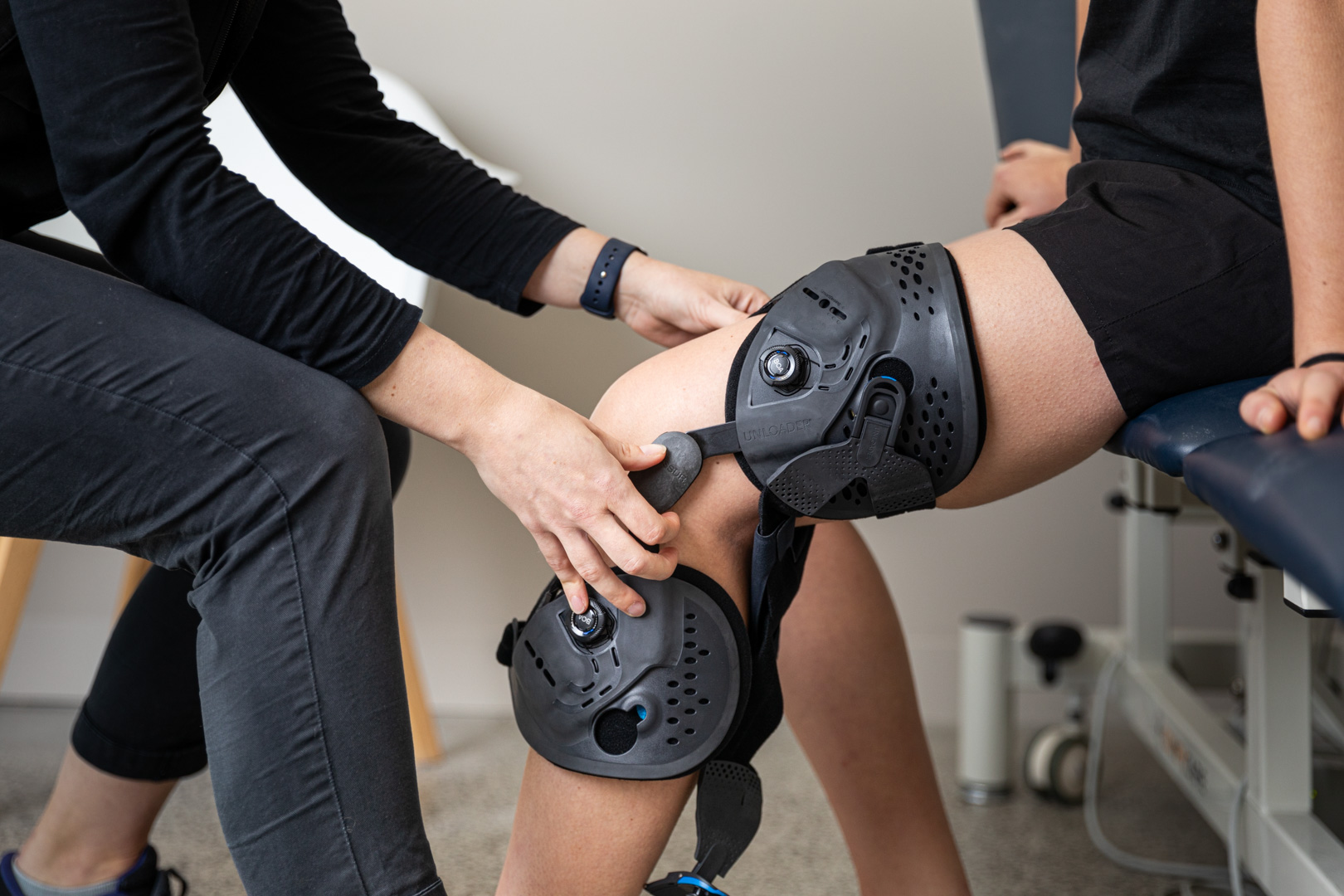
Financing a Post-Operative Knee Brace
Some surgeons include bracing as part of their post-operative care and may provide and fit the brace themselves. However, in many cases, this is not the case.
That’s where Orthotics Plus can help. We specialise in post-operative bracing, ensuring each brace is precisely fitted to the patient. This may involve bending, trimming, adding custom padding, and making any necessary adjustments to optimise comfort and function.
In most situations, we become involved after the surgeon has recommended a brace, at which point we are contacted to supply and fit it. We pride ourselves on offering fair, transparent pricing.
If you’d like to confirm the cost in advance, simply give us a call—we’ll clearly outline the pricing before proceeding with any services.
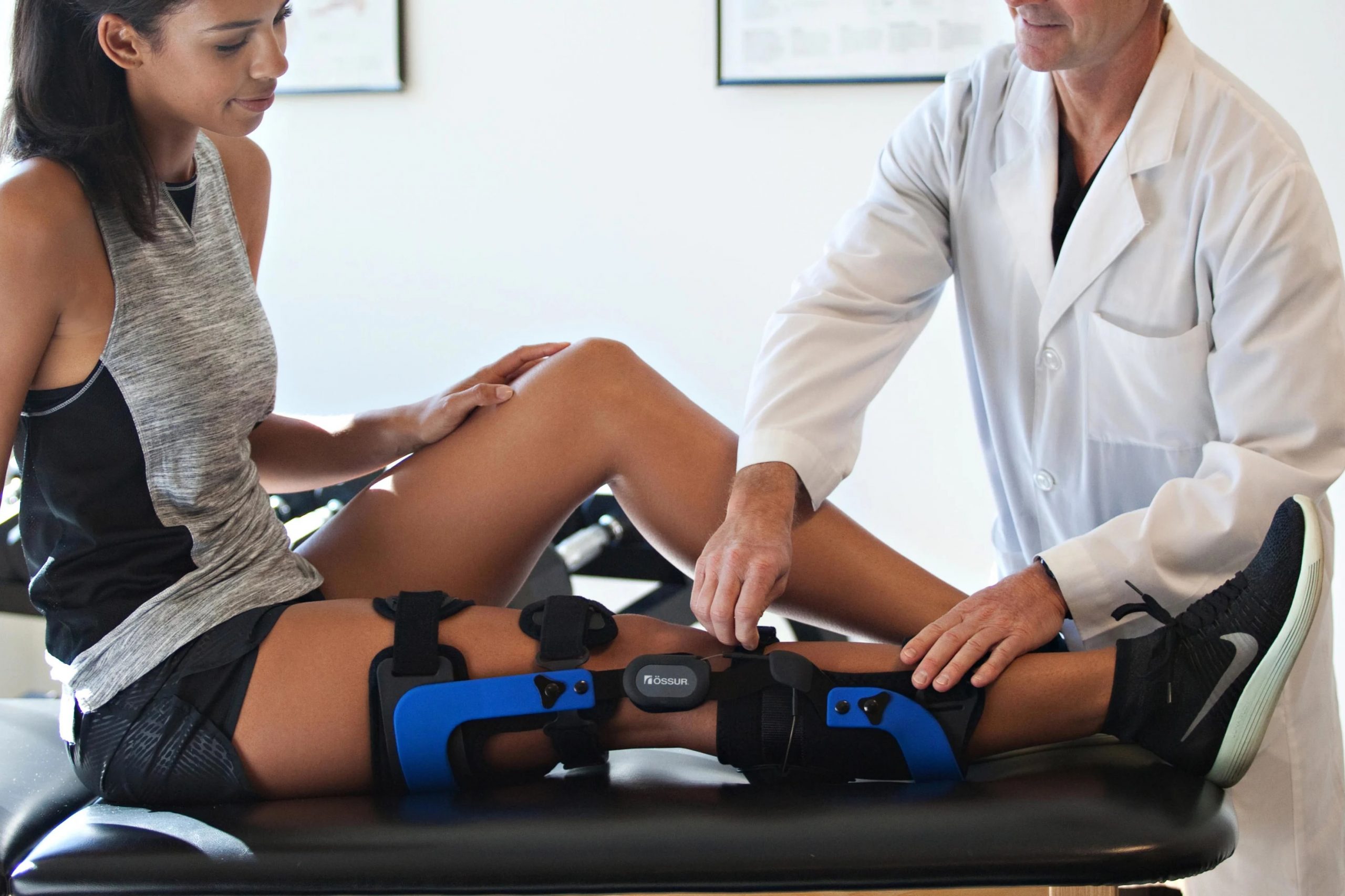
Managing Swelling
There are a few different ways we manage bracing immediately after surgery, particularly when swelling is significant. For example, if you’ve been referred for a PCL brace and there’s too much swelling to fit it properly, we’ll initially use a Zimmer splint to keep your knee supported until the swelling and dressings reduce. That way, we avoid fitting a brace that will become too loose once the swelling goes down, which would compromise both comfort and effectiveness.
In contrast, postoperative or range-of-motion (ROM) knee braces are much more adaptable. These braces have rigid uprights connected by adjustable straps, which allow us to fit them even when swelling is present. We rarely need to switch to a second brace later on because we can simply adjust the existing one as your leg changes shape.
Once the swelling subsides or your dressing is reduced, you can come back in for a quick review. We’ll fine-tune the fit—tightening straps or making other adjustments as needed. These follow-up visits are included in the initial fitting cost.
Depending on your needs, we might see you a couple of times in the early stages of recovery. Typically though, once things settle, ongoing visits aren’t necessary.

We’re Here to Support Your Knee Postoperative Journey
If you are undergoing knee surgery and your surgeon has opted for bracing, then there’s every chance we can support you.
- Contact our Australian admin team with any questions
- View our multiple Melbourne clinic locations
- We have existing relationships with many surgeons
- We are university-trained and fully qualified
Please get started by browsing our clinic locations page.
